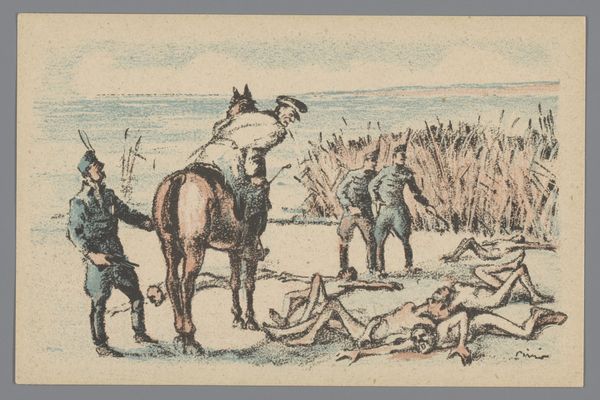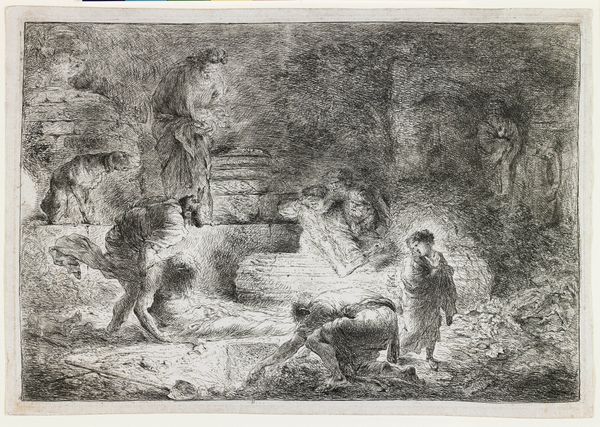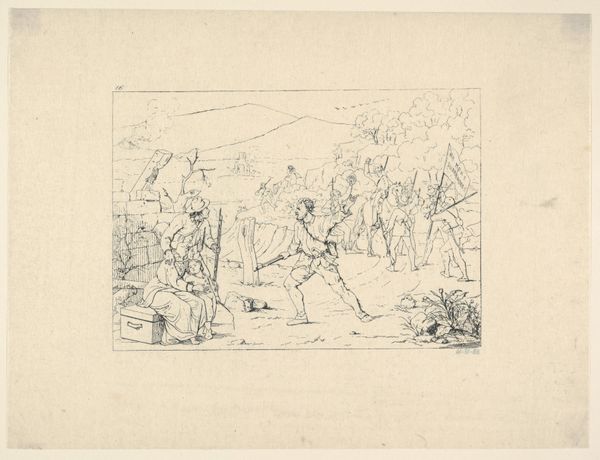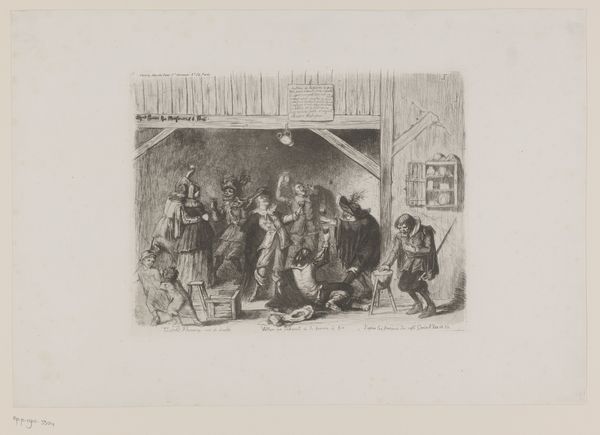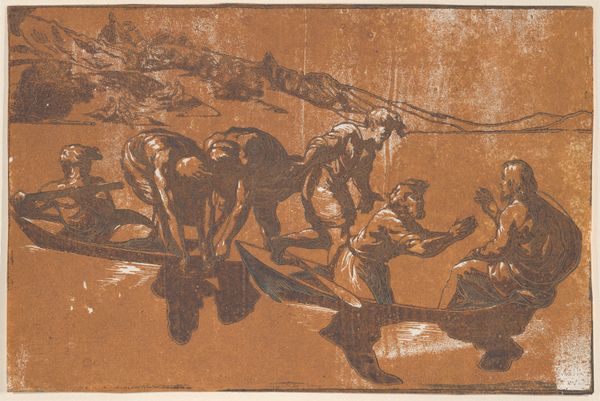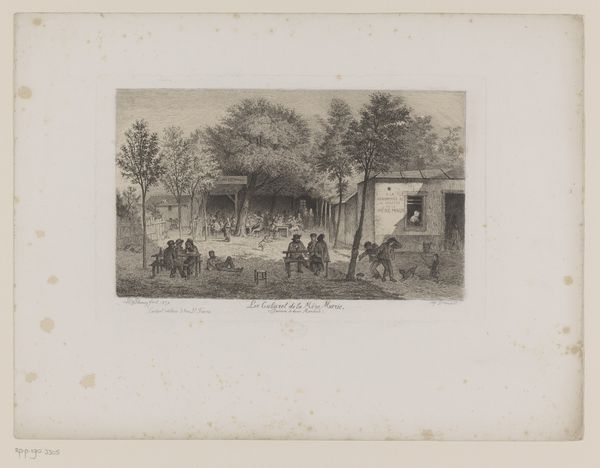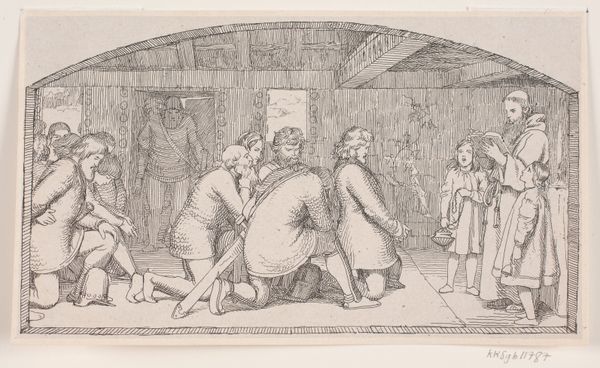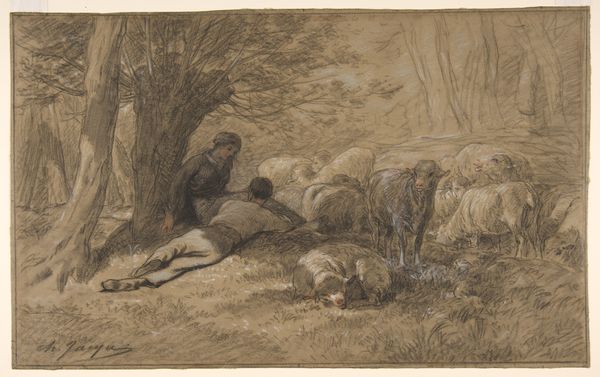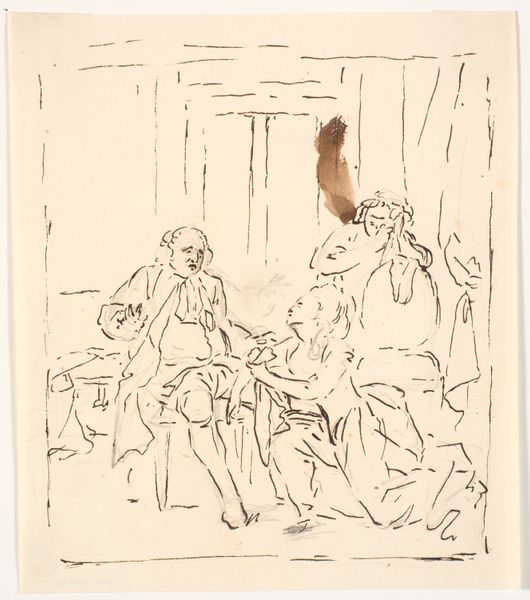
drawing, paper, ink
#
drawing
#
narrative-art
#
ink painting
#
figuration
#
paper
#
ink
#
expressionism
#
history-painting
Dimensions: height 90 mm, width 142 mm
Copyright: Rijks Museum: Open Domain
Curator: This drawing, dating back to 1920, is entitled "Moord en verhangingen door soldaten" or "Murder and Hangings by Soldiers", created by Mihály Biró. It’s currently held here at the Rijksmuseum. Editor: It's raw, undeniably so. The composition immediately throws you off balance with its chaotic distribution of bodies and figures. The ink work feels frenzied. Curator: Absolutely. Biró was a Hungarian artist deeply affected by the aftermath of World War I and the political turmoil in his homeland. This work really reflects the collective trauma and disillusionment of the period. Editor: I’m particularly drawn to the restricted color palette – mainly muted blues, pinks, and grays. The use of color accentuates the brutality. Even the pinkish sky, instead of offering solace, contributes to this feverish atmosphere. Curator: Notice how Biró employs these enduring symbols of injustice: the hangman's tree, figures of defeated people and active oppressors. These stark, brutal images would resonate through cultural memory long after the war's official conclusion. It reminds us of other graphic representations of the horrors of war. Editor: Structurally, the way he uses the thick, almost violently applied, ink strokes reinforces that reading. There's a real sense of urgency, as though Biró felt compelled to translate this horrifying reality into something tangible and inescapable. Curator: War and political violence often aim to strip away individual identity, but Biró ensures we see the faces of the victims, locking us into their shared experience. Their ghostly visages almost scream for posterity, so their suffering is not forgotten. Editor: Indeed. And despite its relatively small scale, the impact of this artwork is incredibly potent. Its unflinching depiction forces us to confront some harsh truths about humanity. Curator: "Murder and Hangings by Soldiers" serves as a vital reminder of art's power to both document and challenge the atrocities of war, making visible that which some might prefer to erase from memory. Editor: For me, this image is not just a historical record, it's a potent commentary on the enduring nature of violence and its effects. And I feel Biró crafted it so these structural elements combine to convey something elemental and unsettling.
Comments
No comments
Be the first to comment and join the conversation on the ultimate creative platform.



